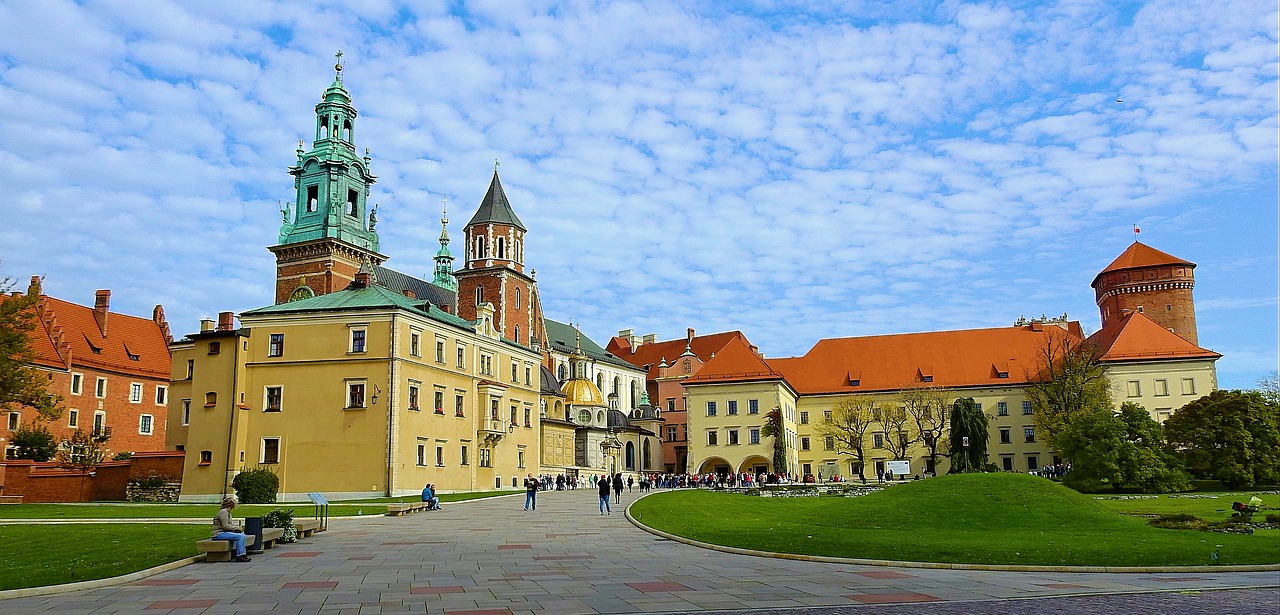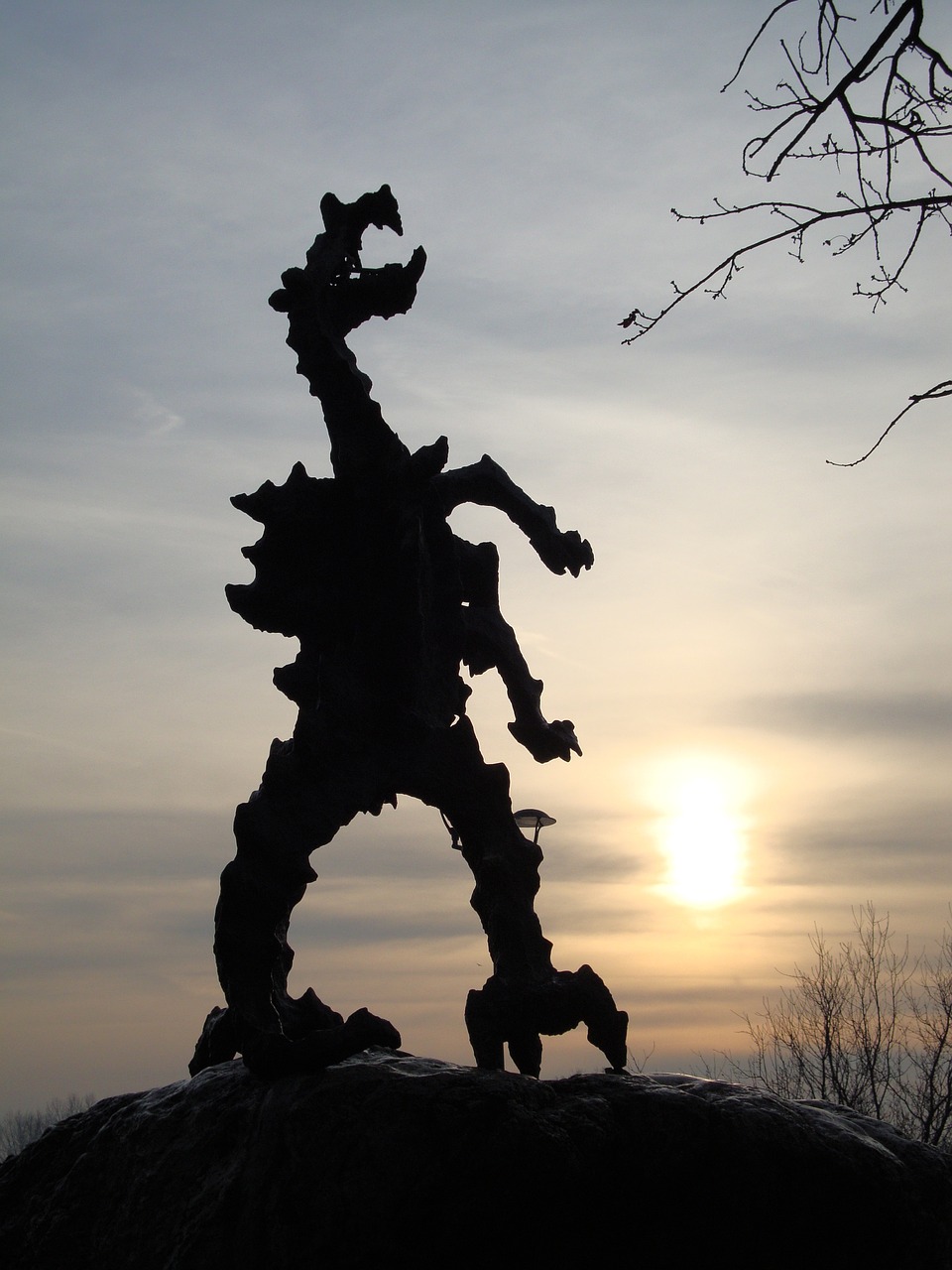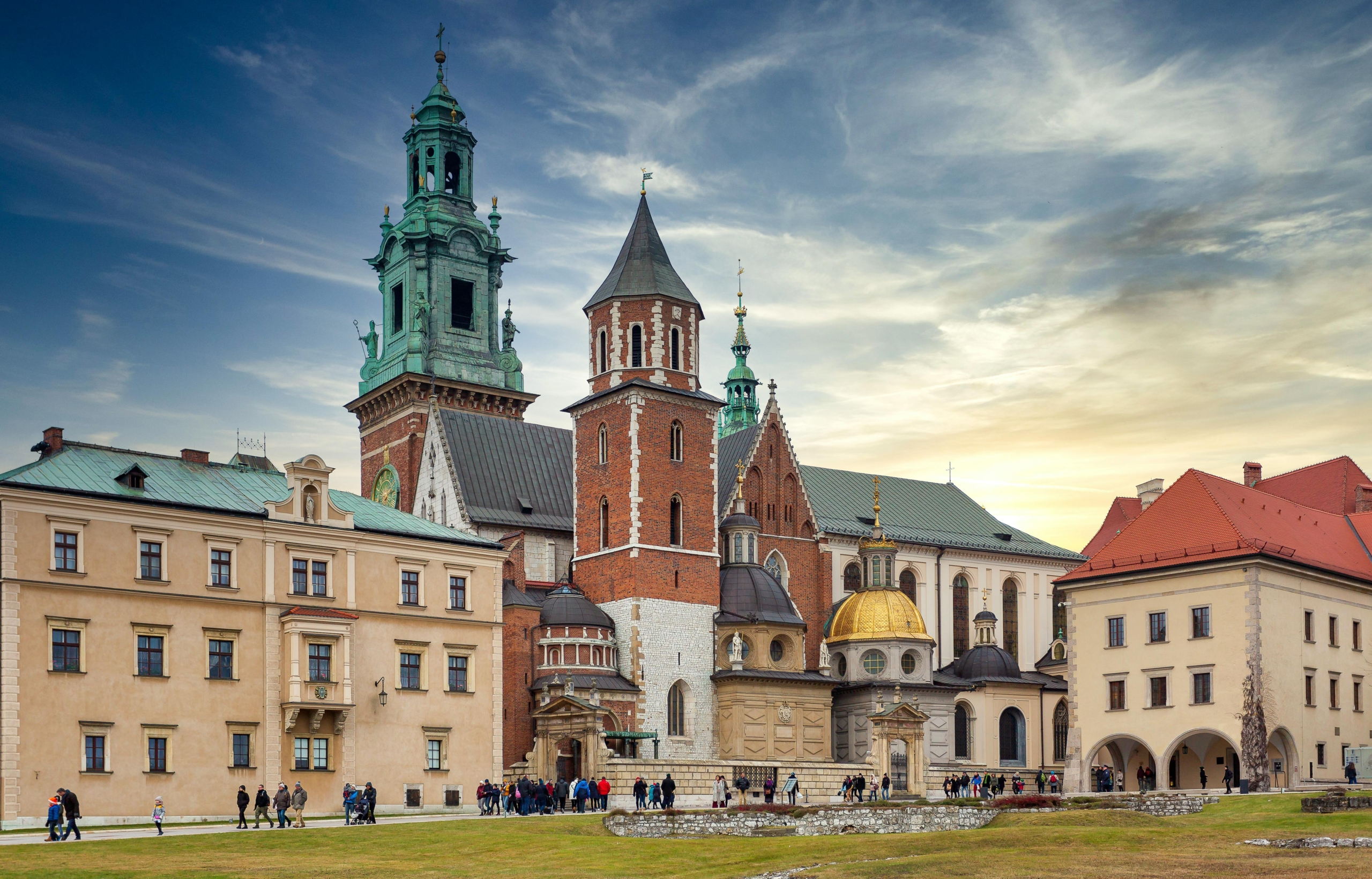Wawel Castle (Zamek Królewski na Wawelu) is one of the most iconic and historically significant landmarks in Poland, located in Kraków, atop Wawel Hill overlooking the Vistula River. It has served as a royal residence, a historic site, a political and cultural hub, and today, it’s a major center of tourism, being both a tourist attraction and UNESCO World Heritage Site in Krakow. The castle complex is a symbol of Polish national identity, representing the country’s rich history, architectural excellence, Polish culture, and resilience through centuries of political changes. Its impressive blend of architectural styles—Gothic, Renaissance, and Baroque—reflects the diverse influences that have shaped Poland’s cultural landscape over the ages. As the former seat of Polish monarchs, Wawel Castle witnessed pivotal moments in the nation’s history, from royal coronations to important political decisions that influenced Europe. Today, it attracts millions of visitors annually, offering a unique glimpse into Poland’s royal past, with its grand halls, artistic treasures, and breathtaking views of Kraków.
History of Wawel Castle
- Early Beginnings (Pre-11th Century)
- Wawel Hill in Krakow has been inhabited since prehistoric times.
- In the 10th century, it became a key political and religious center of the early Polish state under the Piast dynasty.
- Medieval Period (11th-14th Century)
- King Bolesław I the Brave made Wawel his residence in the early 11th century.
- In the 14th century, King Casimir III the Great rebuilt the Wawel Royal Castle in Gothic style, strengthening its defensive walls and adding grand structures.
- Renaissance Splendor (16th Century)
- Under King Sigismund I the Old, Wawel was transformed into a Renaissance palace with the help of Italian architects such as Bartolomeo Berrecci.
- This era marked Wawel’s cultural peak as the seat of Polish kings.
- Decline and Partitions (17th-19th Century)
- The Swedish invasions (17th century) and Poland’s partitions (18th century) led to Wawel’s decline.
- In the 19th century, during Austrian rule, the castle was turned into a military barracks.
- Restoration (20th Century-Present)
- After Poland regained independence in 1918, Wawel was meticulously restored to its former glory.
- Today, it serves as a historic site, museum, and cultural symbol of Polish heritage in Krakow.
- The architecture of the Wawel Castle demonstrates the blending of various periods, reflecting Gothic, Renaissance, and Baroque styles. The castle’s design is a testimony to the artistic influences that have converged in Poland over the centuries. As visitors wander through the halls, they are taken on a visual journey through time, experiencing the grandeur and evolution of Polish architectural artistry.

Attractions Inside Wawel Castle
Visitors can explore various sections of the Wawel Royal Castle in Krakow, each showcasing Poland’s rich history, art, and elements of Polish culture.
- State Rooms
- Elegant chambers with period furnishings, tapestries, and paintings.
- Once used for royal receptions and meetings.
- Royal Private Apartments
- Former living quarters of Polish monarchs, filled with exquisite Renaissance and Baroque decor.
- Crown Treasury and Armory
- A collection of Polish regalia, including ceremonial swords, armor, and treasures from different eras.
- The Lost Wawel Exhibition
- Showcases archaeological finds, including relics from early medieval structures on Wawel Hill.
- Wawel Cathedral (Cathedral of St. Stanislaus and St. Wenceslaus)
- One of the most important religious sites in Poland, the coronation site of Polish kings.
- Houses tombs of Polish monarchs and national heroes, including Tadeusz Kościuszko and Józef Piłsudski.
- Dragon’s Den (Smocza Jama)
- A legendary limestone cave beneath the castle in Krakow, linked to the legend of the Wawel Dragon (Smok Wawelski).
- Sigismund Tower and the Sigismund Bell (Dzwon Zygmunta)
- The Sigismund Bell, cast in 1520, weighs nearly 13 tons and is considered one of the most famous bells in Europe.
- It rings on significant national and religious occasions, such as Independence Day and Christmas.

Interesting Facts about Wawel Castle
- Legend of the Wawel Dragon: According to legend, a fearsome dragon once lived in a cave beneath the hill and was slain by a clever shoemaker who tricked it into eating sulfur.
- UNESCO Recognition: Wawel Castle, along with Kraków’s Old Town, was among the first sites inscribed on the UNESCO World Heritage List in 1978.
- Royal Coronations: Almost all Polish kings were crowned at Wawel Cathedral until the capital moved to Warsaw in the late 16th century.
Visiting Wawel Castle
- Opening Hours: Varies by season; typically open from 9:30 AM to 5:00 PM.
- Tickets: Different ticket options are available for various exhibits (State Rooms, Treasury, Cathedral, etc.).
- Guided Tours: Offered in multiple languages, providing in-depth insights into Wawel’s history and art.
Wawel Royal Castle stands as a testament to Poland’s rich history, resilience, and Polish culture, and is an important historic site that plays a significant role in tourism. Whether exploring its lavish interiors, climbing the Sigismund Tower, or enjoying views of Kraków from the ramparts, the castle offers a memorable journey through the past.
The Krakow For You Luxury Apartments are conveniently located just a 2-minute walk from the majestic Wawel Castle, making them an ideal accommodation choice for visitors eager to explore the heart of Kraków. Staying at Krakow For You offers a unique blend of comfort, convenience, and authentic local atmosphere, ensuring a memorable stay in this historic city. The apartments provide modern, fully equipped interiors with stylish furnishings, perfect for both short and long-term stays. Guests can enjoy spacious rooms, free Wi-Fi, and kitchen facilities, allowing them to feel at home while being within walking distance of Kraków’s most famous landmarks.
Situated in the city’s vibrant Old Town, the apartments allow easy access to popular attractions such as the Main Market Square, Kazimierz Jewish Quarter, and the Vistula River Boulevards, where visitors can enjoy picturesque walks. With numerous cafes, restaurants, and cultural sites just steps away, guests can immerse themselves in Kraków’s rich culinary and historical scene. Additionally, the apartments offer excellent transport links, making it easy to explore further afield, including trips to Auschwitz, Wieliczka Salt Mine, and other key destinations.
Whether visiting for leisure or business, Krakow For You Apartments provide a perfect balance of relaxation and excitement, ensuring an unforgettable stay in one of Poland’s most charming cities
If you’re wondering where to stay in Kraków, take a look at what our apartments have to offer.

